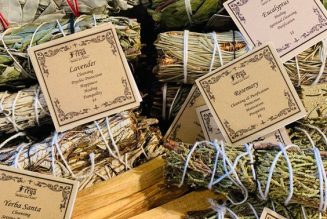Halloween coincides with Samhain. Consequently, many Pagans see Halloween as half of the whole celebration. This time of costumes, revelry, and social inversion grew from the same traditional roots. Samhain is serious and loving—Grandma might visit—while Halloween releases our restrained wildness. Many Pagans revere both agricultural cycles and the processes of nature; this dichotomy manifests in this sometimes two-sided celebration. Both the reverent and the silly have their place on October 31.
Samhain is Gaelic and usually pronounced SOW-win. Most Gaelic speakers translate it to mean “summer’s end.” In the early twentieth century, some scholars argued that the name for the holiday came from the word same theine, meaning “fire of peace” (MacLean). Modern Celtic and Druidic Pagans may have several other names for this day as well, depending on the flavour of their Celtic roots. The Welsh may call it Calan Gaeaf (or Nos Calan Gaeaf), and the Manx Oie Houney or Hop-tu-naa. The Welsh, Scottish, and Irish customs were often about ensuring home and hearth had protection through the winter. The Manx saw (and still see) Oie Houney as a new year celebration. These are not all the same holidays as Samhain exactly—but perhaps around this time of year with the veil so thin, the division of meaning and practice between different cultures thins as well. For modern populist Pagans, all these old and still living festivals inform the meaning of their own celebrations.
